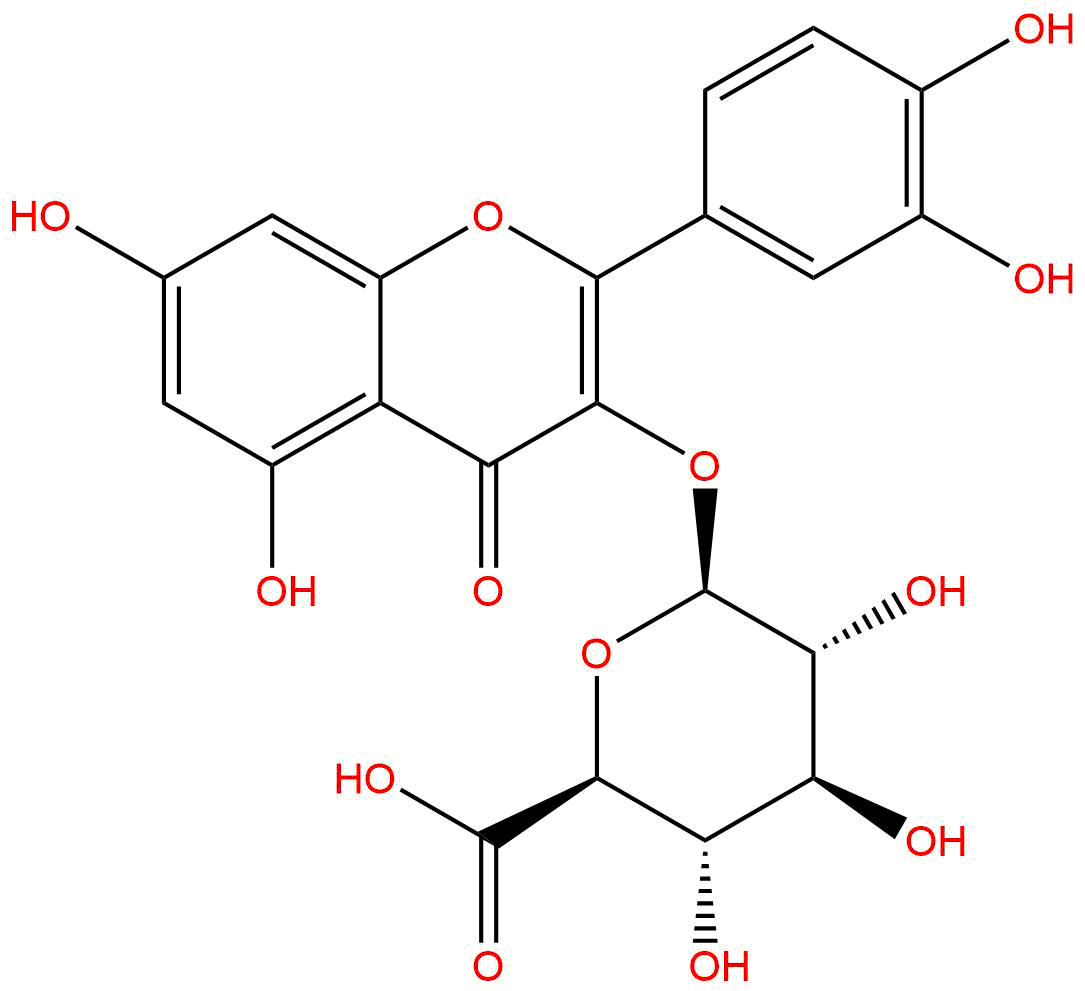Quercetin 3-O-β-D-glucuronide Descrtption
Product name: Quercetin 3-O-β-D-glucuronide
Synonym name:
Catalogue No.: BPF2172
Cas No.: 22688-79-5
Formula: C21H18O13
Mol Weight: 478.362
Botanical Source:
Physical Description: Yellow powder
Type of Compound: Flavonoids
Purity: 95%~99%
Analysis Method: HPLC-DAD or/and HPLC-ELSD
Identification Method: Mass, NMR
Packing: Brown vial or HDPE plastic bottle
Storage: Store in a well closed container, protected from air and light. Put into refrigerate or freeze for long term storage.
Whenever possible, you should prepare and use solutions on the same day. However, if you need to make up stock solutions in advance, we recommend that you store the solution as aliquots in tightly sealed vials at -20℃. Generally, these will be useable for up to two weeks.
The product could be supplied from milligrams to grams, up to kilograms
Inquire for bulk scale.
Descriptions:
Quercetin-3-O-glucuronide, significantly reduces the generation of β-amyloid (Aβ) peptides by primary neuron cultures generated from the Tg2576 AD mouse model, brain-targeted quercetin-3-O-glucuronide may simultaneously modulate multiple independent AD disease-modifying mechanisms , thus, it may contribute to the benefits of dietary supplementation with red wines as an effective intervention for AD.[1]
Quercetin-3-O-glucuronide (0.1μM) suppresses invasion of MDA-MB-231 breast cancer cells and MMP-9 induction, and inhibited the binding of [ 3 H]-NA to β 2 -AR, suggests that it may function to suppress invasion of breast cancer cells by controlling β 2 -adrenergic signaling, and may be a dietary chemopreventive factor for stress-related breast cancer.[2]
Quercetin-3-O-glucuronide are equally effective in inhibiting ROS-associated inflammation and ameliorating insulin resistant endothelial dysfunction by beneficial regulation of IRS-1 function.[3]
Quercetin-3-O-glucuronide is a potential anti-atherogenic metabolite, enhancing the anti-inflammatory properties of M2a macrophages and modulating effects in the presence of pro-inflammatory stimuli.[4]
Quercetin-3-O-glucuronide has anti-neuroinflammatory effects on LPS-induced neuroinflammation in BV2 Cells.[5]
Quercetin-3-O-glucuronide induces ABCA1 in macrophages, and to provide an alternative explanation to previous studies on arteriosclerosis prevention by quercetin.[6]
References:
[1] Ho L, Ferruzzi M G, Janle E M, et al. 2013, 27(2):769-81.
[2] Yamazaki S, Miyoshi N, Kawabata K, et al. Arch Biochem Biophy, 2014, 557:18-27.
[3] Guo X D, Zhang D Y, Gao X J, et al. Mol Nutr Food Res, 2013, 57(6):1037–45.
[4] Derlindati E, Dall Asta M, Ardigò D, et al. Food & Function, 2012, 3(11):1144-52.
[5] Yoon C S, Kim D C, Ko W M, et al. Korean J Pharma, 2014, 45(1):17-22.
[6] Kazuaki Ohara, Hideyuki Wakabayashi, Yoshimasa Taniguchi, et al. Biochem Bioph Res Co, 2013, 441(4):929-34.
[7] FAN Dong-sheng, ZHAO Chao, CHEN Hua-guo, et al. Journal of Instrumental Analysis, 2012.


